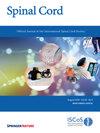学习指导自己的护理:四肢瘫痪者报告的障碍和促进因素。
IF 2.2
4区 医学
Q3 CLINICAL NEUROLOGY
引用次数: 0
摘要
研究设计:对焦点小组数据进行定性分析:确定因脊髓损伤(SCI)导致四肢瘫痪的患者在学习指导自身护理过程中遇到的障碍和促进因素:环境:美国新泽西州和佐治亚州的社区:方法:由患有 SCI 的退伍军人和平民组成三个焦点小组,共有 26 名因 SCI 长期(≥1 年)四肢瘫痪的患者参加,他们每天为护理人员提供指导。内容分析法用于确定障碍和促进因素:结果:学习指导个人护理所面临的挑战包括(结果:学习指导护理的挑战包括:(1)不接受 SCI 的持久影响;(2)还不了解自己 SCI 后的身体;(3)尴尬;(4)被信息淹没;(5)住院康复环境与 "真实世界 "之间的差异;(6)缺乏有能力且愿意提供帮助的助手;以及(7)对批评护理人员犹豫不决。帮助参与者成为成功的护理主任的因素包括(1) SCI 患者的生活经验;(2) 善于观察;(3) 有效沟通;(4) 树立为自己的需求辩护的信心;(5) 学会何时 "放手",何时大声说话;(6) 向同伴学习:护理指导是一项复杂的技能,需要经过长期的发展,并需要对自身需求和偏好的认识、自信心和强大的沟通能力。康复临床医生在培养 SCI 患者有效指导自己的护理时,应培养他们对自己身体的认识,确定与护理人员成功沟通的策略,并提供机会练习护理指导技能和与有经验的同伴进行讨论。本文章由计算机程序翻译,如有差异,请以英文原文为准。

Learning to direct one’s care: barriers and facilitators reported by people with tetraplegia
Qualitative analysis of focus group data. Identifying barriers to and facilitators of learning to direct one’s own care as a person with tetraplegia due to spinal cord injury (SCI). Community, in New Jersey and Georgia, USA. Three focus groups of veterans and civilians with SCI, involving 26 people with chronic (≥1 year) tetraplegia due to SCI who provided direction to caregivers on a daily basis. Content analysis was used to identify barriers and facilitators. Challenges to learning to direct one’s care included: (1) lack of acceptance of lasting effects of SCI; (2) not yet understanding one’s body post-SCI; (3) embarrassment; (4) being overwhelmed with information; (5) differences between the inpatient rehabilitation setting and the “real world”; (6) lack of capable and willing assistants; and (7) hesitance to criticize caregivers. Factors that helped participants become successful directors of care included: (1) experience living with SCI; (2) being observant; (3) communicating effectively; (4) developing confidence to advocate for one’s own needs; (5) learning when to “let go” and when to speak up; and (6) learning from peers. Direction of care is a complex skill that is developed over time, and requires awareness of one’s needs and preferences, self-confidence, and strong communication skills. Rehabilitation clinicians’ efforts to prepare people with SCI to direct their own care effectively should cultivate awareness of one’s body, identify strategies for communicating successfully with caregivers, and provide opportunities for practice of care direction skills and discussion with experienced peers.
求助全文
通过发布文献求助,成功后即可免费获取论文全文。
去求助
来源期刊

Spinal cord
医学-临床神经学
CiteScore
4.50
自引率
9.10%
发文量
142
审稿时长
2 months
期刊介绍:
Spinal Cord is a specialised, international journal that has been publishing spinal cord related manuscripts since 1963. It appears monthly, online and in print, and accepts contributions on spinal cord anatomy, physiology, management of injury and disease, and the quality of life and life circumstances of people with a spinal cord injury. Spinal Cord is multi-disciplinary and publishes contributions across the entire spectrum of research ranging from basic science to applied clinical research. It focuses on high quality original research, systematic reviews and narrative reviews.
Spinal Cord''s sister journal Spinal Cord Series and Cases: Clinical Management in Spinal Cord Disorders publishes high quality case reports, small case series, pilot and retrospective studies perspectives, Pulse survey articles, Point-couterpoint articles, correspondences and book reviews. It specialises in material that addresses all aspects of life for persons with spinal cord injuries or disorders. For more information, please see the aims and scope of Spinal Cord Series and Cases.
 求助内容:
求助内容: 应助结果提醒方式:
应助结果提醒方式:


